Laser Tattoo Removal in Japan
Search and Compare the Best Clinics and Doctors at the Lowest Prices for Laser Tattoo Removal in Japan

Find the best clinics for Laser Tattoo Removal in Japan
No clinics available
Vietnam offers the best prices Worldwide
Price: $ 3

- Home
- Japan
Compare Before & After Photos of _procedure_photos.phpLaser Tattoo Removal
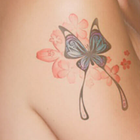

Front view
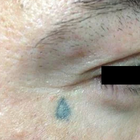
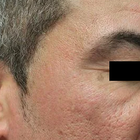
Half-side view
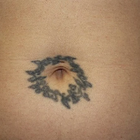

Front view
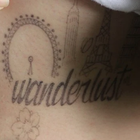
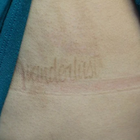
Front view
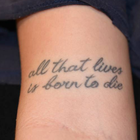
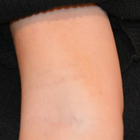
Front view

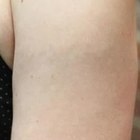
Full-side view
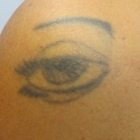
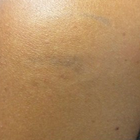
Front view
WHY US?
At Medijump, we're making medical easy. You can search, compare, discuss, and book your medical all in one place. We open the door to the best medical providers worldwide, saving you time and energy along the way, and it's all for FREE, no hidden fees, and no price markups guaranteed. So what are you waiting for?

Free

Best Price

Widest Selection

Risk-Free
What you need to know about Laser Tattoo Removal in Japan
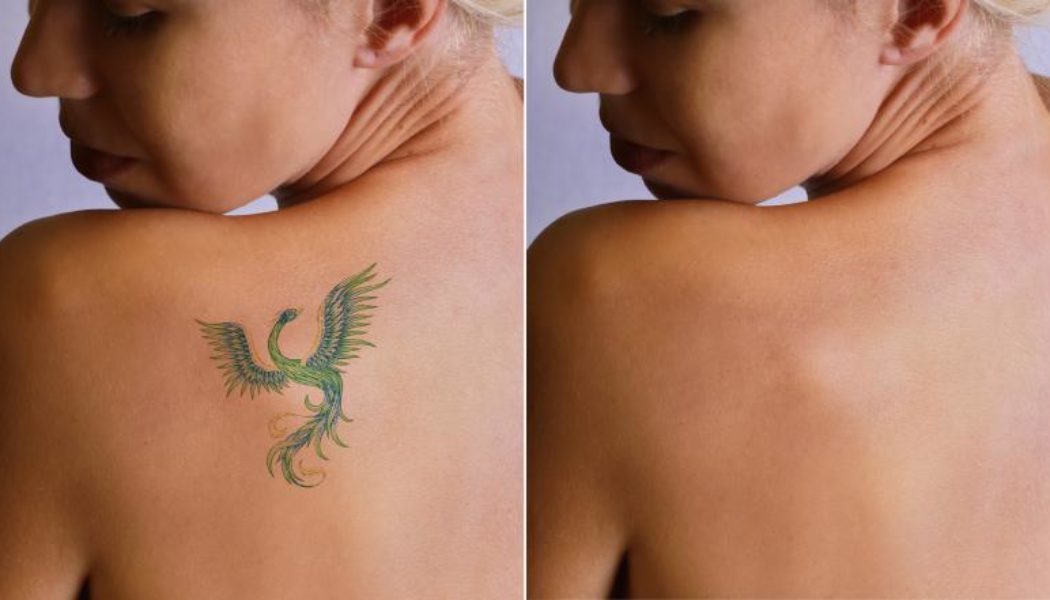
Laser tattoo removal is a technique to eliminate an unwanted tattoo with little to no side effects. It works by breaking up the pigment colors with a high-intensity light beam. You can undergo a laser tattoo removal if you regret having a tattoo, unhappy with the appearance of your tattoo, the tattoo causes infection, or you have an allergic reaction to the tattoo. Once you've done laser tattoo removal, your unwanted tattoo will be gone forever.
Grasping the notion that Laser Tattoo Removal is not a one-off activity, but instead encompasses an array of treatments distributed over multiple weeks, is crucial. Variables like the dimensions, hue, tattoo positioning, along with the person's general well-being determine the count of requisite sessions.
What is the cost of Laser Tattoo Removal in Japan?
In Japan, the Laser Tattoo Removal cost can greatly fluctuate. It hinges upon several considerations such as the size, emplacement, tattoo color, and the amount of needed therapy sessions. Other influencing factors are the laser technology utilized and the reputation of the clinic.
The majority of clinics in Japan extend payment schemes and financing aids to render the process more financially manageable. Bear in mind, though, that Laser Tattoo Removal isn't typically included in medical insurance coverage as it's deemed a beauty-related procedure. Irrespective of the expenditure, it is vital to give precedence to first-rate care and the proficiency of the healthcare staff over cost-effectiveness.
What does a Laser Tattoo Removal Procedure Involve?
The process of Laser Tattoo Removal entails directing particular wavelengths of laser light on the tattooed part of the skin. A highly specialized laser is chosen depending on the colors present in the tattoo for carrying out this technique. The light pulses penetrate the skin's topmost layers to reach the tattoo's pigment. This energy from the light leads to the fragmentation of the tattoo ink into minute particles, which are gradually flushed out by the body's immunity system.
Most people do not need anesthesia, but you can ask for a topical or local anesthetic from your doctor. During the procedure, you will have to wear protective eye shields. Then, your doctor or technician uses a laser to bring pulses of intense light to the top layers of your skin and only the tattoo pigment will absorb this light. Depending on the size, color(s), and age of your tattoo, you might need more than one treatment session.
How Long Should You Stay in Japan?
You can leave Japan after your tattoo removal procedure. However, it may take several treatments to completely remove the tattoo. Given that everyone reacts distinctively, the process might necessitate anywhere from 3 to 10 visits. The interval between each treatment is around 7 weeks to allow the treated area enough time to heal. You are free to retreat to your home, or a place of your choosing, in between these sessions. This sequence persists until your tattoo is completely removed. Nevertheless, it is critical to resume your journey to Japan for each forthcoming Laser Tattoo Removal.
What's the Recovery Time Like?
You will feel pain and discomfort for around a week, but your skin will completely heal in around six weeks. You should be able to go to work as long as you do not feel any pain or discomfort that interferes with your life.
Right after every session, you may observe minor swelling and a reddish tint on the manipulated area. These indications normally wane within a short span that can range from a few hours to two days and can be tamed with chilled packs and popularly accessible pain relievers. Evading exposure to sunlight and demanding activities in the initial few days is of utmost importance to forestall probative issues.
What sort of Aftercare is Required for Laser Tattoo Removal Procedures in Japan?
Your doctor will give you aftercare instructions; make sure to follow the instructions. Keep the treated area clean, do not soak the area, and try to avoid popping blisters. If the treated area itches, apply hydrocortisone cream. Avoid smoking as it can reduce the effectiveness of laser tattoo removal by around 70%.
The treated region should also be protected from the sun and covered with a high SPF sunscreen because the skin will be more susceptible to UV deterioration. Additionally, avoiding activities that could result in significant sweating or close contact with the area of the skin that is receiving treatment is advised. You must avoid the impulse to pick or scratch at the treated area if you want the skin to heal properly. Finally, maintaining effective healing and general health requires drinking plenty of water and eating a diet that is nutritionally balanced.
What's the Success Rate of Laser Tattoo Removal Procedures in Japan?
Laser tattoo removal is the most effective tattoo removal treatment with a success rate of over 95%. It's important to understand that when discussing tattoo removal, the term "effectiveness" typically refers to the degree of tattoo fading rather than complete tattoo removal. The depth, type, and concentration of the ink, the tattoo's colour, as well as the recipient's skin features and overall health, can all have an impact on the final design.
Are there Alternatives to Laser Tattoo Removal Procedures in Japan?
Laser Tattoo Removal has evolved into a highly effective strategy for eliminating tattoos, but you're afforded various other alternatives if Laser Tattoo Removal does not align with your requirements. Intense pulsed light (IPL) therapy, for instance, where light pulses are deployed to dissolve the tattoo ink, could be a viable proposition particularly for larger tattoos. However, for heavily inked or deeper tattoo locations, IPL might not yield the desired outcome.
Dermabrasion is yet another alternative. It's a process that employs skin 'sanding' to eliminate the surface and middle skin layers. Compared to laser treatments, dermabrasion can be less comfortable and requires a more prolonged healing duration. In certain instances, it might also be viable to surgically remove the tattoo with a scalpel, but be prepared for the potential of scarring. Therefore, when deciding on the best course of action, it's important to discuss your unique requirements and expectations with a specialist.
What Should You Expect Before and After the Procedure
Before the Laser Tattoo Removal, there will be a discussion with the expert regarding your health history, the treatment information, and your anticipated outcomes. The area on which the tattoo is located must be hygienic and devoid of any ongoing skin issues. A topical anesthesia may be applied during the session for your comfort. The feeling you might experience when the laser is used could be likened to the feeling of a rubber band being flicked against your skin.
Post-treatment, the tattooed section may look inflamed and red, and it could feel a bit warm to the touch and tender. These symptoms should diminish over a few days. It is vital that you adhere to the follow-up care guidelines given by the clinic to ensure the best healing process and outcome. Generally, this requires cleanliness of the area, avoiding direct sun, and abstaining from activities that can irritate the skin. Regular check-ups of your healing process with your expert can assist with timely detection and management of any potential post-treatment issues.
What are Potential Risks of Laser Tattoo Removal?
Laser Tattoo Removal carries some side effects and risks, such as:
- Infection
- Hypopigmentation and hyperpigmentation (treated skin becomes significantly darker or lighter than its surroundings)
- Scarring, bleeding, swelling, and blisters
It's important that you get proper treatment by a reputable doctor to avoid these side effects and risks.
Whilst the information presented here has been accurately sourced and verified by a medical professional for its accuracy, it is still advised to consult with your doctor before pursuing a medical treatment at one of the listed medical providers
No Time?
Tell us what you're looking for and we'll reachout to the top clinics all at once
Enquire Now

Popular Procedures in Japan
Prices Start From $28

Prices Start From $6,002

Prices Start From $278

Recommended Medical Centers in Japan for procedures similar to Laser Tattoo Removal

- Interpreter services
- Translation service
- Religious facilities
- Medical records transfer
- Medical travel insurance
- Health insurance coordination
- TV in the room
- Safe in the room
- Phone in the room
- Private rooms for patients available

- Interpreter services
- Translation service
- Religious facilities
- Medical records transfer
- Medical travel insurance
- Health insurance coordination
- TV in the room
- Safe in the room
- Phone in the room
- Private rooms for patients available

- Interpreter services
- Translation service
- Religious facilities
- Medical records transfer
- Medical travel insurance
- Health insurance coordination
- TV in the room
- Safe in the room
- Phone in the room
- Private rooms for patients available

- Interpreter services
- Translation service
- Religious facilities
- Medical records transfer
- Medical travel insurance
- Health insurance coordination
- TV in the room
- Safe in the room
- Phone in the room
- Private rooms for patients available

- Interpreter services
- Translation service
- Religious facilities
- Medical records transfer
- Medical travel insurance
- Health insurance coordination
- TV in the room
- Safe in the room
- Phone in the room
- Private rooms for patients available

- Interpreter services
- Translation service
- Religious facilities
- Medical records transfer
- Medical travel insurance
- Health insurance coordination
- TV in the room
- Safe in the room
- Phone in the room
- Private rooms for patients available

- Interpreter services
- Translation service
- Religious facilities
- Medical records transfer
- Medical travel insurance
- Health insurance coordination
- TV in the room
- Safe in the room
- Phone in the room
- Private rooms for patients available

- Interpreter services
- Translation service
- Religious facilities
- Medical records transfer
- Medical travel insurance
- Health insurance coordination
- TV in the room
- Safe in the room
- Phone in the room
- Private rooms for patients available
Laser Tattoo Removal in and around Japan
About Japan
Japan is special in its own way; the culture, food, people, as well as technology are envied by the world over. With old Japan, comes the ancient tradition in the form of a geisha performance, onsen (hot spring) visit in the mountains, tea ceremony, or shrine visit. In contrast, there is modern Japan, full of smart systems and electronics, colorful advertisements and displays, and ultra-modern architecture. In recent years, Japan has become one of the top destinations in the world for oncology treatments and sees many tens of thousands of medical tourists each year. Many of these travel from within the region, including China and Korea, but they are unable to compete with the SE Asian nations with prices. Private hospitals are located across the country, with a particular focus in major cities like Tokyo, Kyoto, and Osaka. 25 of these facilities are JCI-accredited, with many offering Laser Tattoo Removal procedures.
Popular Parts of Japan
Located in the Pacific Ocean, Japan is a stratovolcano archipelago. The four largest islands are Honshu, Hokkaido, Kyushu, and Shikoku. With a population of 127 million, 98% are ethnic Japanese. The country perfectly balances traditional with modern technology. Tourists will first see its exceptionally modern face, but after traveling around, they will find many opportunities to connect with the beautiful traditional culture.
- Tokyo is Japan’s capital, one of the 47 prefectures of Japan. It’s a huge metropolis that offers traditional arts and culture, futuristic infrastructures, and good restaurants. The cherry blossoms that bloom in Spring is one of the most popular sights. The soft pink petals are an icon of the country. There is an unlimited choice of shopping, many museums that cover every era of Japanese art history, and even a robot restaurant.
- Kyoto is made of religious architecture, with around 2000 temples and shrines. It moves at a slower pace than any other city in Japan. Filled with samurais, geishas, Zen gardens, and the torii gate, Kyoto is the spiritual center of Japan. The city is also known for its food, head to the Nishiki Market, a four-hundred-year-old local food market that offers a range of national cuisine to modern food from all over the world.
- Osaka, the second largest metropolitan area after Tokyo is known to be the most delicious city. The city is nicknamed “the nation’s kitchen.” Visit Dotonburi to experience the food culture of Osaka. Besides the food, there are numerous attractions that tourists should visit such as Universal Studios Japan, Cup Noodles Museum, Aquarium Kaiyukan, Osaka Castle, and Umeda Sky Building.
- Fukuoka has a welcoming feel with sunny weather and so much to do. It’s made up of two towns, the port city of Hakata and the former castle town of Fukuoka. Visit the impressive Fukuoka Castle, explore the Sumiyoshi-Jinja Shrine, learn history in Kyūshū National Museum, experience the ancient art of calligraphy and origami in Hakata Machiya Folk Museum, and enjoy a calming bath in one of the Onsen hot springs.
- Nagoya is the industrial center of Japan. It’s the birthplace of Toyota and a popular pinball-style game Pachinko. Although many of the historic buildings were destroyed in the air raids of 1945, tourists can still indulge in its culture and tradition. Visit the Nagoya Castle that was reconstructed in 1959, walk around the Atsuta Shrine, or see the history of the automobile in the Toyota Automobile Museum.
Weather and Climate in Japan
Japan has four distinct seasons.
- Summer starts in June and lasts until August. The temperature can get very hot, up to 40 °C in some places, with high humidity. June is the rainy season where the farmers plant their rice. The rainy season is over in August but the typhoon season starts to peak.
- Autumn starts in September and ends in November. September has the greatest risk of typhoons. The weather is generally mild. October is pleasantly warm with less humidity than in summer, making it a food time for traveling the country.
- The temperature will drop in Winter. It lasts from December to February and is usually dry, pleasant, and sunny. The average temperature is around 2°C to 12°C, it rarely drops below 0°C. The northern island of Hokkaido, the Japan Alps, and the Japan Sea coast get a lot of snow while Tokyo gets very little snow.
- Spring is said to be the best time to visit Japan because of its mild weather and cherry blossoms. The season starts in March and ends in May. The temperature will gradually increase during spring with little rainfall and clear sky.
Getting Around in Japan
The main airport for international tourists is the Narita International Airport. It is located around 60km east of central Tokyo. It serves both domestic and international flights to almost every major city around the globe. There are several budget airlines that operate flights from this airport, namely Jetstar Japan, Eastar Jet, and Peach. There are other international airports such as Kansai International Airport, New Chitose International Airport, and Kyushu Saga International Airport.
To get to Tokyo from Narita Airport, tourists can use the rail, bus, taxi, or car rental. The most affordable train line is the Keisei Line that connects with the Toei Asakusa Subway Line and the Yamanote Line, it costs around ¥1,190 to ¥1,230 ($10 to $11.3). There’s also the Sky Access Express train that offers better access to Tokyo, a trip to Asakusa will cost around ¥1,290 ($11.9) and take about 58 minutes. The quickest way to get to Tokyo will be by the Skyliner train, it takes just 36 minutes to Nippori and will cost around ¥2,470 ($22.7). The airport introduced N’EX Tokyo Round-Trip ticket for foreign passport holders that provides round-trip travel from Narita to Tokyo and back for ¥4,000 ($37) for adults and ¥2,000 ($18.4) for children.
A regular taxi from Narita to Tokyo is very expensive, usually over ¥20,000 ($184). The best option is the shared minibus that starts with ¥6,180 ($57) per person. Buses are usually more affordable, the Limousine Bus costs ¥2,880 ($26.5) and the Tokyo Shuttle costs around ¥900 ($8) to ¥1,000 ($9).
Getting around Japan is fairly easy because the country has excellent public transportation. It is recommended to get a Japan Rail Pass. Japan’s bullet train is fast but expensive. There are cheaper train options. Buses are less expensive but will take more time than trains.
Tourist Visas in Japan
Citizens of 68 countries and territories can enter and stay in Japan for up to 90 days without a visa. Citizens of Indonesia, Brunei, and Thailand are granted a 15-day visa-free trip to Japan. Citizens of the United Arab Emirates are allowed to stay for 30 days without a visa. It is advisable to contact the nearest Consular Section of the Embassy or Consulate General of Japan for more information.
Additional Information
- Local Currency: Yen (¥) is the local currency. $1 will get you ¥11 ¥1,000 is worth approximately $9.
- Money & Payments: ATMs are usually located in post offices and convenient stores. There are only a few branches of major Japanese banks that accept foreign-issued cards. Credit cards are accepted in major cities, but the rural area doesn’t. It’s best to always bring cash and bring a coin purse because everything below ¥500 is coins. Tipping is not mandatory, high-end hotels and restaurants usually add a 10% service fee to the bill.
- Local Language: The official language is Japanese. English is common in major cities with many tourists such as Tokyo, Osaka, and Tokyo. Some restaurants write their menu in English and Japanese.
- Local Culture and Religion: The dominant religion in Japan is Shinto and Buddhism. There’s a small group of Christians as well.
- Public Holidays: Japan has sixteen national holidays each year, including Children’s Day, Constitution Memorial Day, and Marine Day. The country hosts numerous annual festivals such as Gion Matsuri in Kyoto, Awa Odori in Tokushima, and Yuki Matsuri Snow Festival in Sapporo.
Popular Searches
- Plastic Surgery in Thailand
- Dental Implants in Thailand
- Hair Transplant in Thailand
- Breast Augmentation Thailand
- Gastric Sleeve in Thailand
- Gender Reassignment Surgery in Thailand
- Laser Hair Removal in Bangkok
- Botox in Bangkok
- Dermatology in Bangkok
- Breast Augmentation in Bangkok
- Coolsculpting in Bangkok
- Veneers in Turkey
- Hair Transplant in Turkey
- Rhinoplasty in Turkey
- Stem Cell Therapy in Mexico
- Rhinoplasty in Mexico
- Liposuction in Mexico
- Coolsculpting in Tijuana
- Rhinoplasty in Korea
- Scar Removal in Korea
- Gastric Sleeve in Turkey
- Bone Marrow Transplant in India
- Invisalign in Malaysia
- Plastic Surgery in the Dominican Republic
- Tummy Tuck in the Dominican Republic
- Plastic and Cosmetic Surgery in Poland
- Rhinoplasty in Poland
- Hair Implant in Poland
- Dental Implants in Poland
- IVF in Turkey